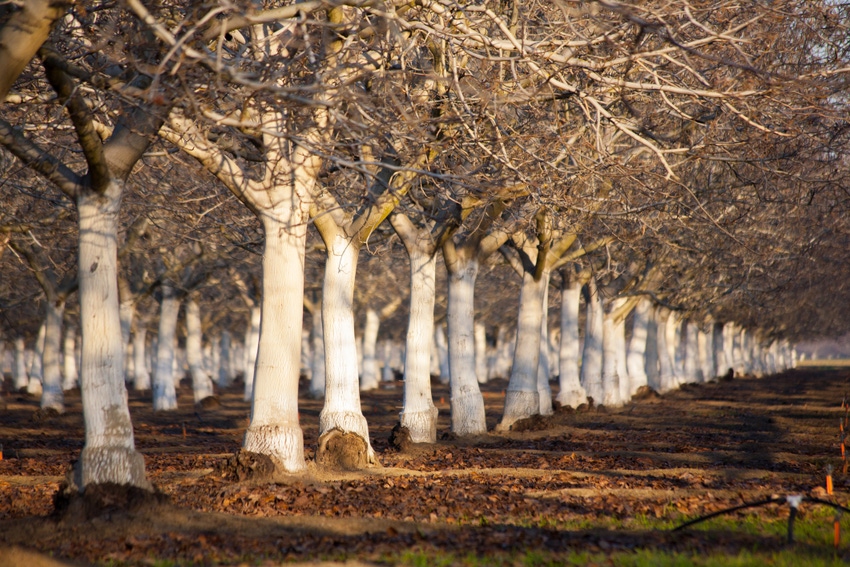
The loss of more than half of the biomass power generation capacity in California has left growers with few disposal alternatives for wood generated by whole orchard removals.
While piling and burning pulled trees has been the standard practice, restrictions based on air quality concerns and securing permits for burns have growers seeking other options. Chipping the trees for hauling to a cogeneration plant was another alternative.
During the 1990s, cogeneration plants welcomed woody biomass to power the facilities, but competition from solar and wind power generation and the loss of price support has led to the closure of more than half of the cogeneration facilities.
Growers looking for alternatives now have data on the impact of incorporating woody biomass from removed orchards back into the ground. At a recent Central Valley summit on alternatives to the open burning of agricultural waste, panelists outlined some benefits plus discussed ongoing research into soil incorporation including cost considerations.
Mike Curry of Johnson Farms at Denair says whole orchard incorporation has been successful in his almond operation, but stressed it cannot be the only answer. Soil incorporation is expensive, he says, but he believes there are benefits to soil health.
It is anticipated, Curry said, that about 40,000 acres of almond trees will be pulled annually given current planting rates.
Johnson Farms began the soil incorporation of chipped almond trees in 2009 on a 48-acre block. After incorporation and land preparation, the land was planted to the almond varieties Aldrich, Nonpareil, and Wood Colony. Last year, the farm incorporated wood chips from pulled almond trees into a 270-acre block and will re-plant to almonds next month.
Considerations for orchard recycling include the soil type and correct incorporation. Some soils may not require additional organic matter, Curry says, and different soil types may require a different process. Good incorporation of the wood chips is also important.
Curry said their ground was deep ripped in three directions. Additional passes through the orchard may also be necessary prior to the first harvest. Huller-sheller operations may also have issues if the incorporation and breakdown of chips are insufficient.
Curry reports that the almond trees planted back in the 48-acre block are healthy and uniform. The ground was fumigated and soil amendments were applied.
He says organic matter incorporation from the previous orchard has increased the soil’s water-holding capacity and biological activity in the soil which promotes strong root growth. There are also potential savings on water and nutrients.
Johnson Farms’ cost to grind the trees and incorporate the biomass in the soil was $900-$1,000 per acre. Grinding and removing the biomass totaled $500-$600 per acre, and the burning including the permit costs was $500 per acre.
Curry is a past member of the Almond Board of California’s (ABC) Leadership program. He says the ABC is funding seven research projects on the impact of biomass incorporation, including whole orchard recycling, plus hulls and shells.
Mohammed Yaghmour, University of California Cooperative Extension orchard systems advisor at Kern County, says university research has focused on potential adverse effects from whole orchard recycling on the next planted orchard. Trials conducted at UC’s Kearney Agriculture Research and Education Center compared the health of trees planted after orchard grinding, soil incorporation, and orchard burning.
Yaghmour reports that burning appears to release nutrients back into the soil more rapidly than decomposition since the burn plots had significantly more carbon, organic matter, and cation exchange capacity in the top 10-15 centimeters of soil the first year after trial initiation.
Over the next several years, soil and leaf analyses in the trial showed that grinding and incorporation outpaced burning in adding organic matter, carbon, and other nutrients. Yields (kernel pounds per acre) were higher in soil incorporation orchards, plus microbial diversity was higher.
Yaghmour says soil sampling did not detect higher plant pathogen levels in grinding and soil incorporation trials.
About the Author(s)
You May Also Like




